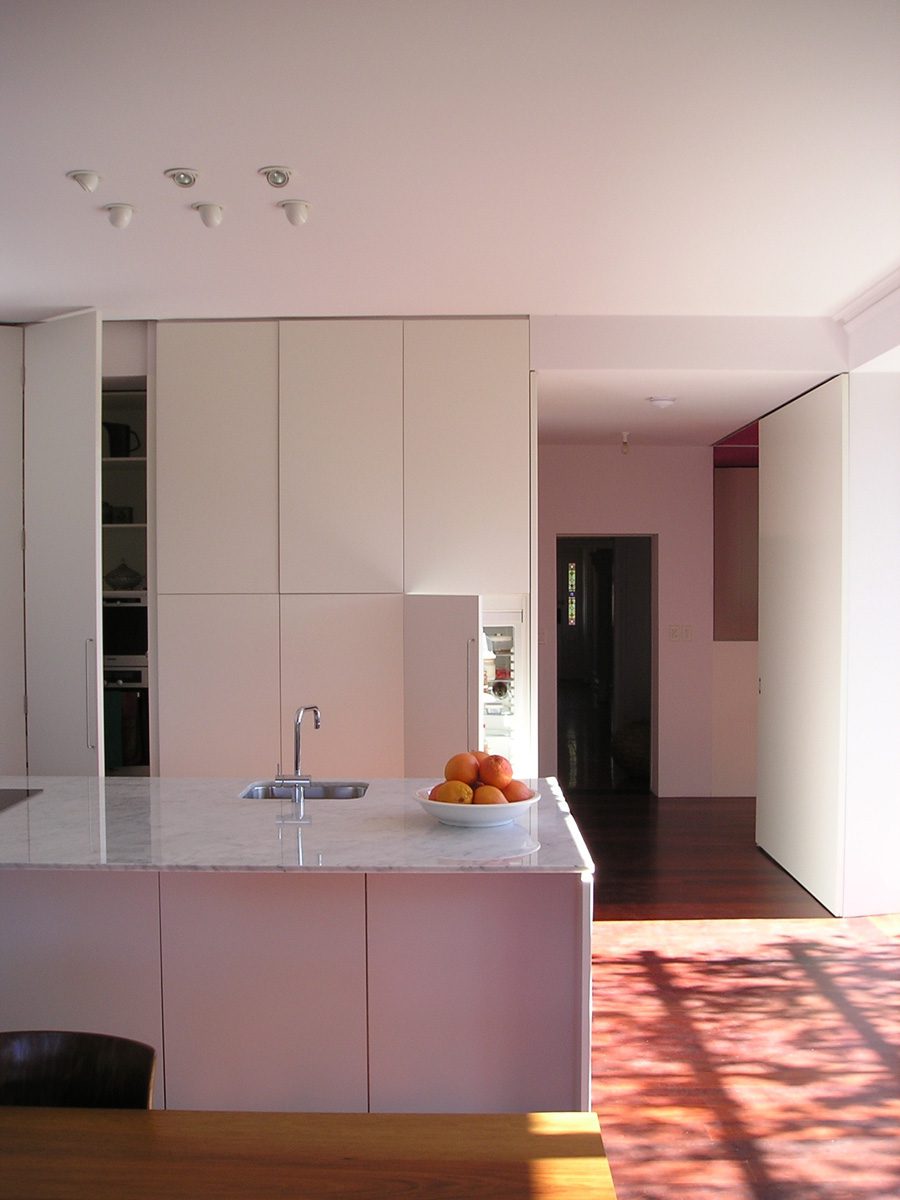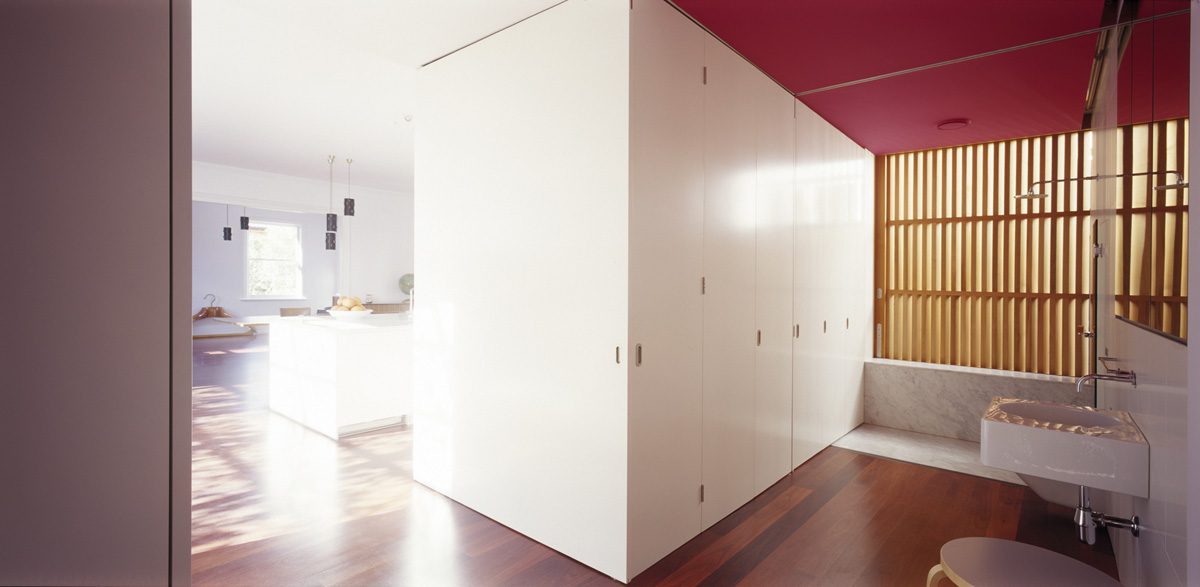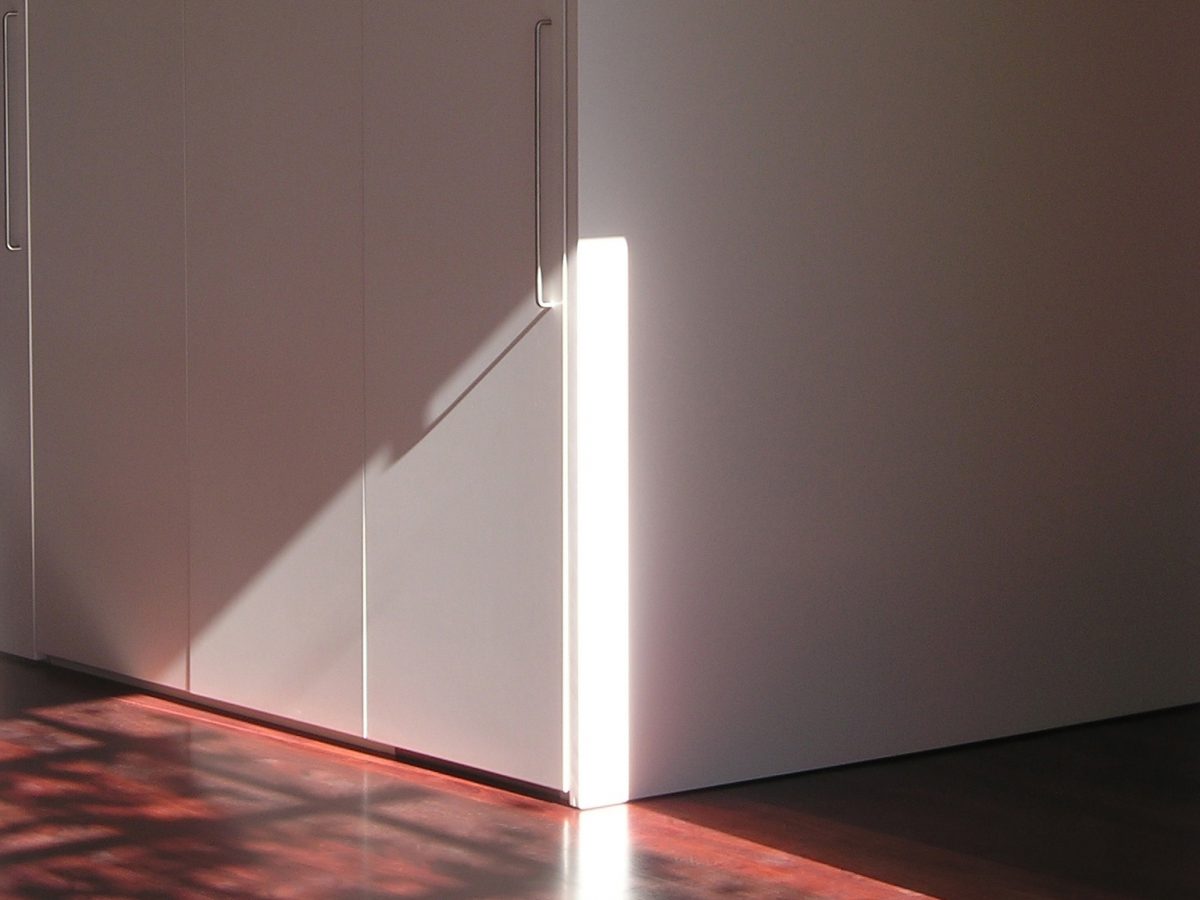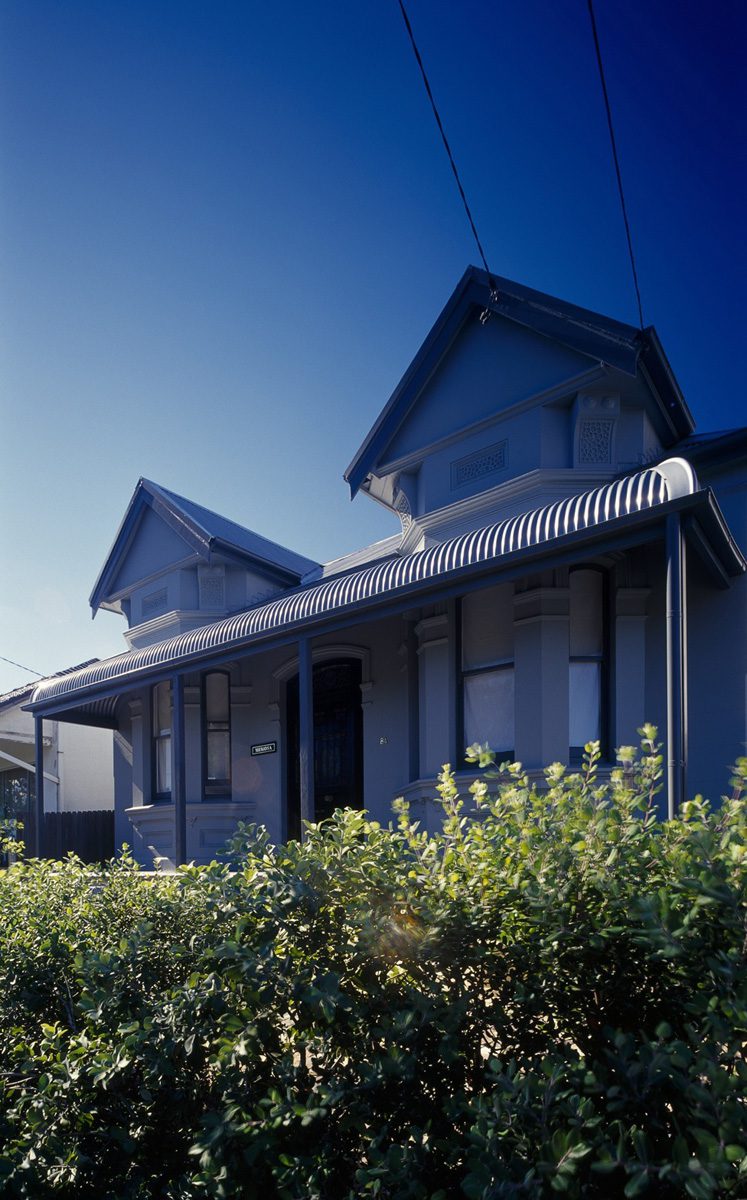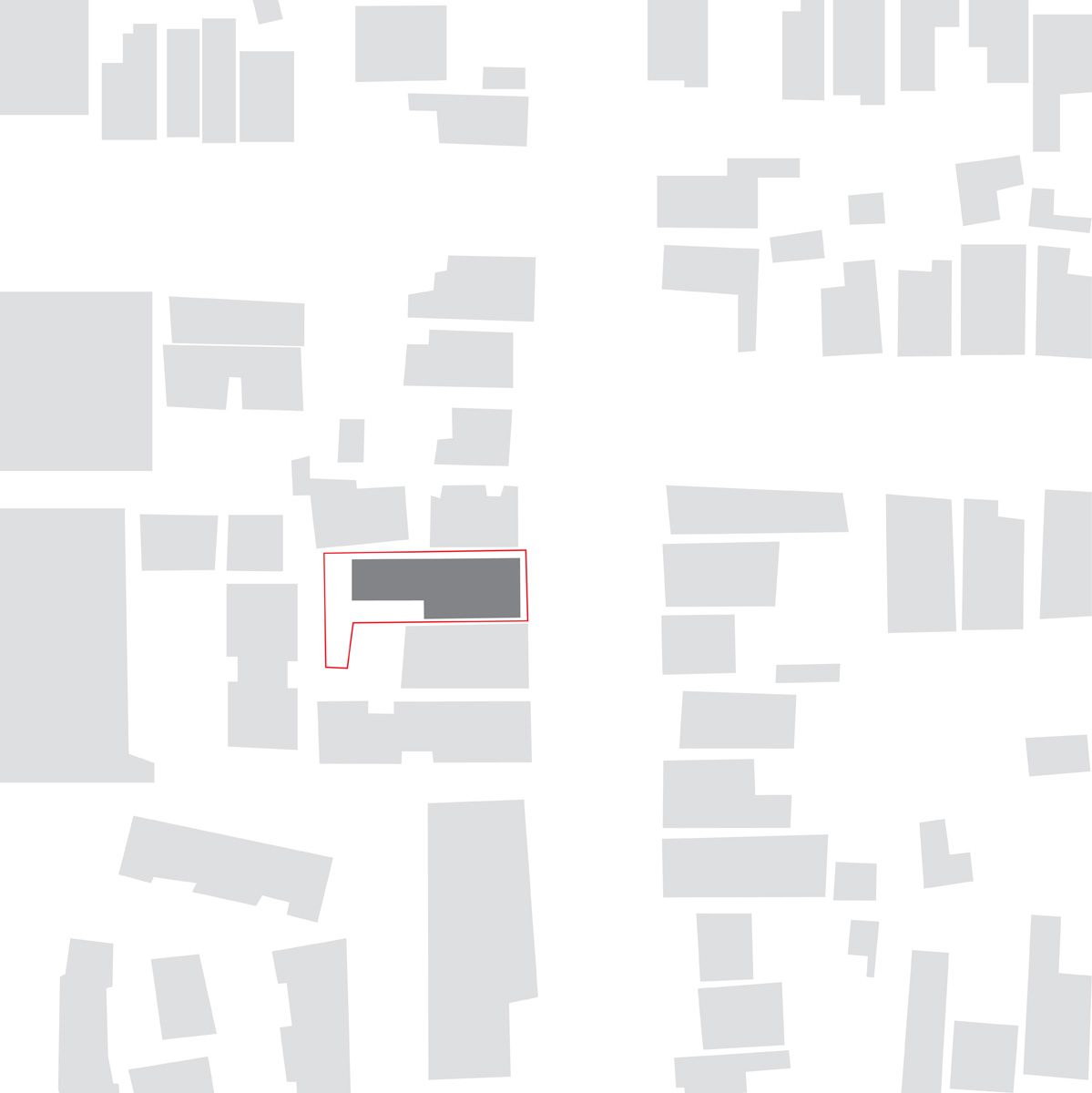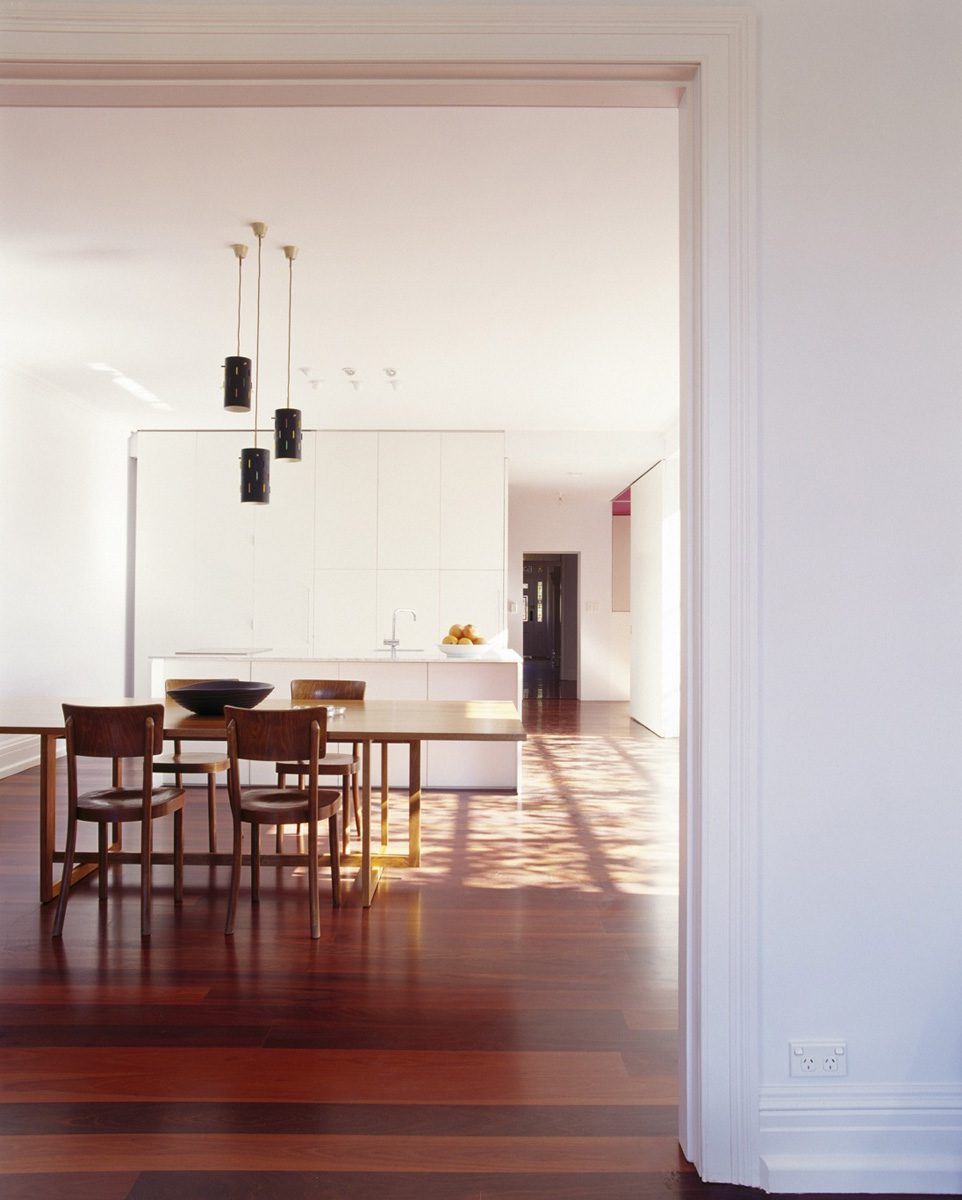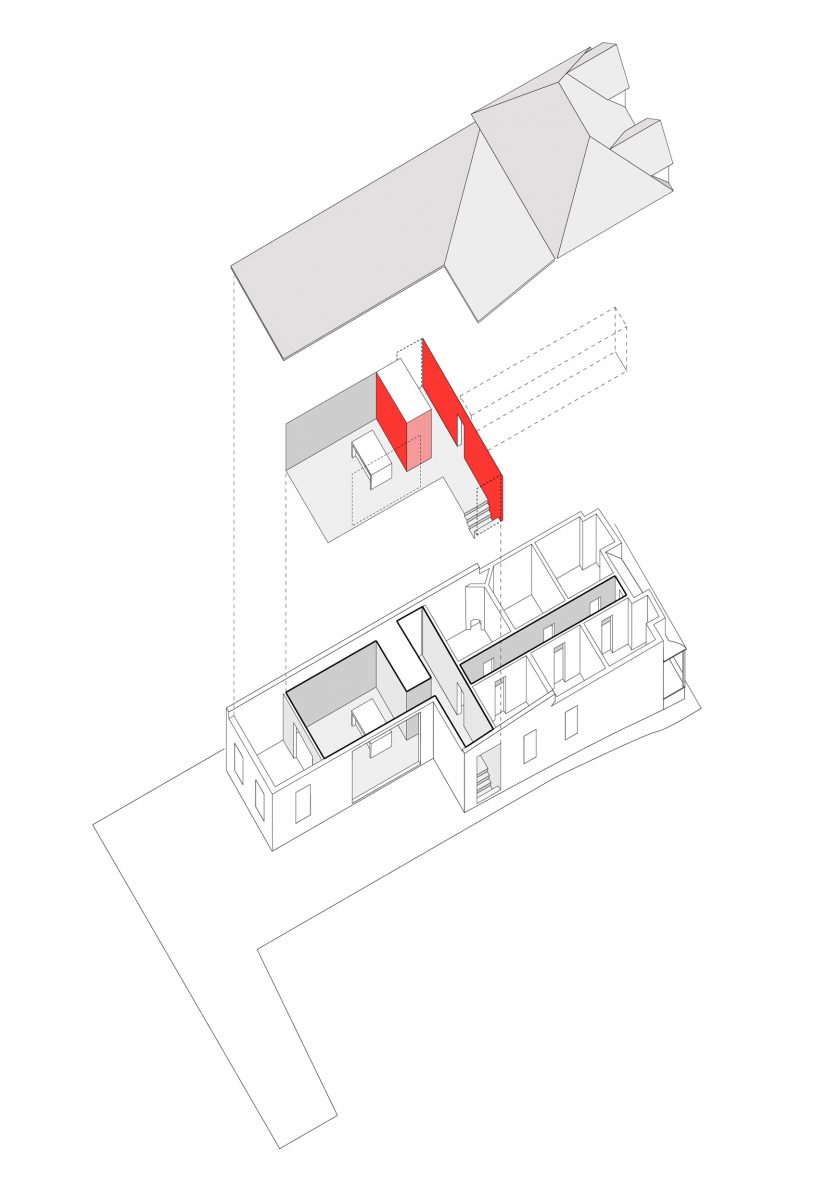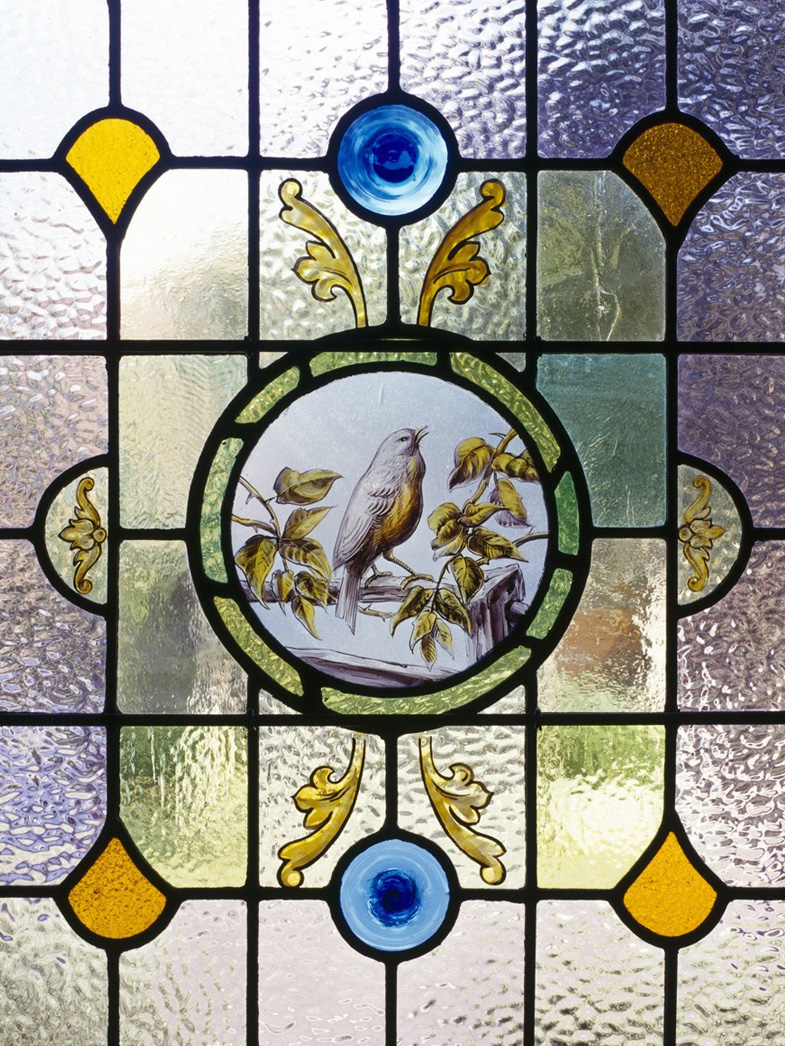The project is an alteration to a heritage listed house from the 1800s. The work focussed on the rear of the house especially the strip of wet areas between the old house and a 1980s extension. A single rectangular space spanning from one side of the house to the other is created. This room marks the connection between the new and the old. This ‘in between’ space contains a bathroom at either end and a laundry which can be fully shut away and concealed within a large white box. This is the only element separating the bathroom from the kitchen and dining spaces. It also contains a kitchen preparation and storage area and conceals both small and large kitchen appliances.
The bathroom space can be sub-divided into three separate rooms, with doors that match the height and width of the room and slide away to be fully concealed within joinery. This space counteracts the formal symmetry of a central corridor running the full length of the house, which is lit by an intensely coloured stained glass window at the front entry. Continuing this sense of a long thin passage, lit intensely at its ends, the walls at either end of this new bathroom space were demolished to make way for glass sliding doors, that match the height and width of the room. Taking a cue from the rose coloured tint and light from the stain glass at the front door, the ceilings at the two ends of the bathroom space, are painted pink. Light filtering through outside screens creates a warm pinkish glow. When the internal sliding doors are fully open, the bathrooms form a continuous uninterrupted light-filled space with the open plan kitchen and living area beyond. A large opening connects the new kitchen dining area to the vine covered patio outside.
- OLYMPUS DIGITAL CAMERA
Architect
Stephen Collier
Collaborators
Ruwen Rimpau
Anna Ciliberto
Consultants
ACOR Consulting
Ruth Daniell – Conservation and Design
Builder
Ciolino Constructions
Photography
Brett Boardman


